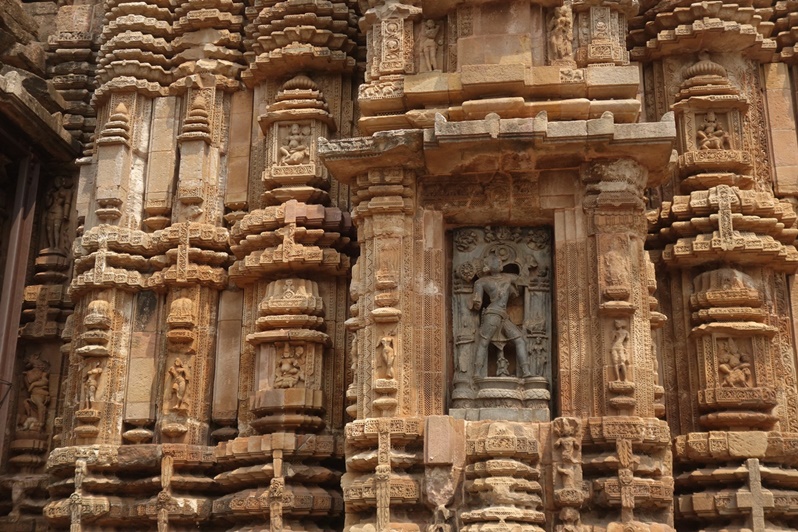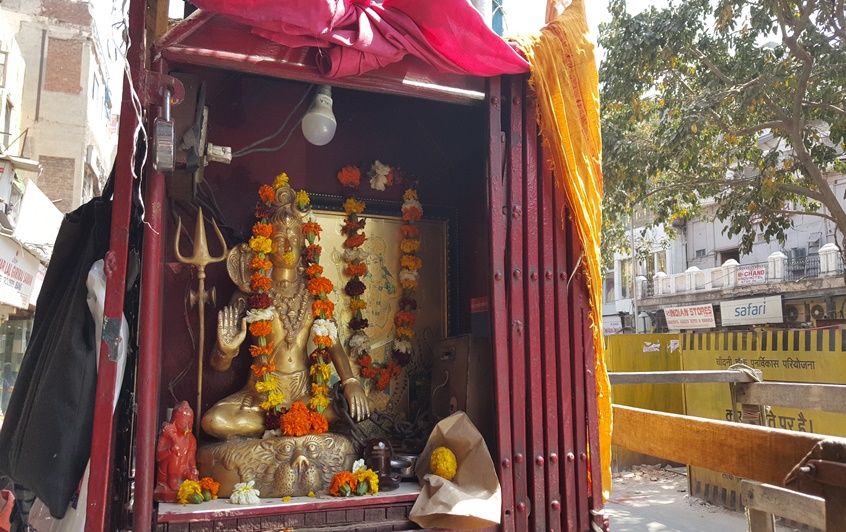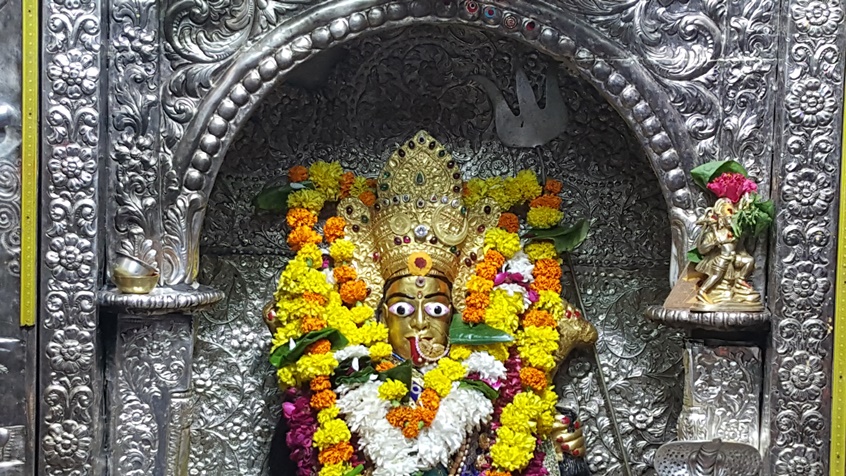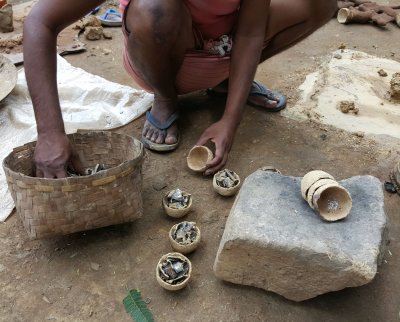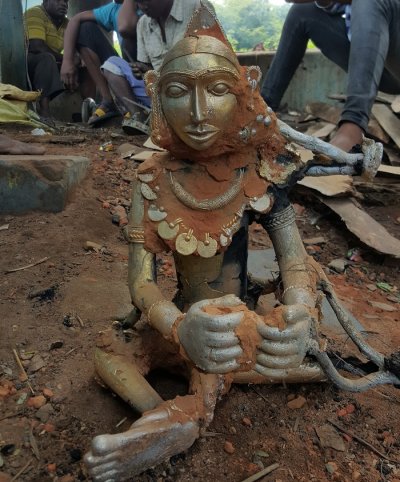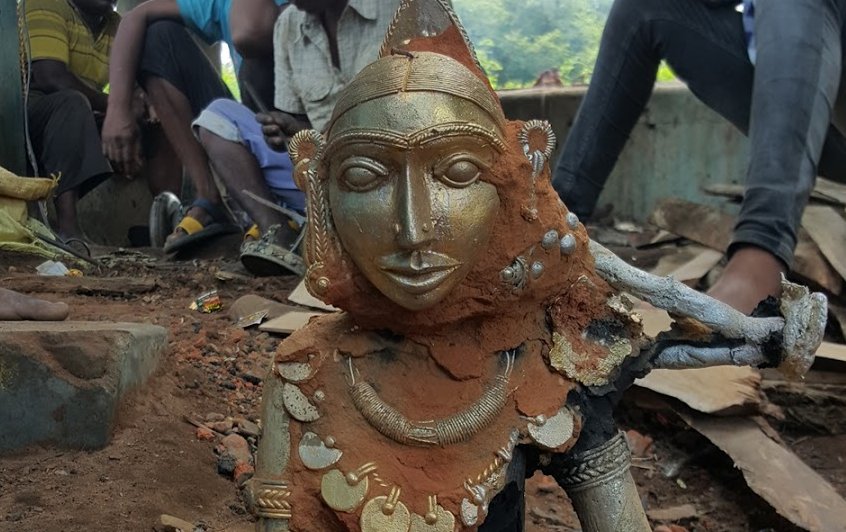
par Bertrand Bellaize, le 18 février 2020
Art tribal Dokra ou Dokhra en Inde : coulage et finition de la statue en laiton
Une fois, l’œuvre en cire terminée, celle ci est à nouveau recouverte d’un mélange d’argile, à base de sable de rivière. A partir du moment où le séchage est terminé, une nouvelle couche est apposée afin de renforcer la structure de l’ensemble avant la mise au feu. Des trous pour l’écoulement de la cire sont également réalisés à cette étape. Une dernière couche issue d’un mélange argile-balle de riz est appliquée pour solidifier l’ensemble : les pertes au feu sont importantes, le résultat est loin d’être garanti à tous les coups : argile qui se fend, gaz qui crée des brèches….
L’alliage cuivreux utilisé se rapproche du laiton tel que nous le connaissons en Europe soit 70 à 95 % de cuivre pour 5 à 30 % de zinc. Les Dokras se fournissent en laiton avec des morceaux d’objets usuels cassés : ustensiles de cuisine, plomberie…. l’alliage n’est donc jamais équivalent d’une fabrication à l’autre. Le calcul de la quantité nécessaire de métal est fait approximativement par expérience.
A ce moment du processus, deux techniques de coulage du laiton (ou alliage cuivreux) sont mis en œuvre en fonction des régions.
La première méthode consiste à couler l’alliage en utilisant les trous d’évacuation de la cire qui vont être élargis par la confection d’un entonnoir. La seconde consiste en la fabrication d’une poche en argile qui sera ajouté au modelage et qui contiendra le métal.
Dans le premier cas, deux foyers peuvent être allumés, le premier servira à chauffer le modelage, le monter en température jusqu’au la bonne température d’écoulement de la cire. Dans l’autre foyer, le mélange des métaux sera mis à chauffer (parfois un peu de sel est ajouté pour accélérer le processus) 2 à 3 heures jusqu’à 400°C : ici encore tout est expérimental et le savoir faire des artistes joue un rôle primordial pour déterminer la bonne température d’écoulement de la cire, pour verser le métal en fusion (par exemple la couleur des flammes au dessus de la fusion ….).
Dans le second cas, le modelage est mis en entier dans le feu, l’habileté de l’artiste va consister à déterminer quand le métal se sera écoulé : pour cela , à l’aide de pinces, il soulève et secoue à intervalles réguliers le modelage pour connaître la fluidité du laiton.
Dans certains villages, un four communal sert pour tous les villageois (Ouest Bengal) : il est allumé quelques fois par mois ; ailleurs chaque famille possède son foyer, en général un trou dans le sol à l’extérieur de la maison sous un auvent pour se protéger du soleil ou de la pluie de la mousson, qu’il utilise en fonction des besoins.
Il faut savoir que les Dokras travaillent en tongue, en pagne, en tee-shirt sans aucune protection, avec le risque de se brûler mais aussi avec les inconforts liés à la chaleur du brasero. Les ustensiles sont rudimentaires, le métal est fondu dans des creusets grossiers qui sont saisis par des pinces et versés dans le modelage : les pertes sont importantes (15-20%) même si l’alliage cuivreux est par la suite récupéré et réutilisé lors de la prochaine fabrication.
Une fois le coulage réalisé, le modelage est retiré du feu pour refroidir, aspergé d’eau, puis démoulé grossièrement. Une fois complètement refroidi, la gangue d’argile qui a fortement durcie au contact du feu est d’abord enlevée à l’aide d’un petit marteau pointu. Puis intervient un long travail de nettoyage de toutes les petits impuretés argileuses qui adhèrent dans les nombreux détails de la sculpture à l’aide d’une brosse métallique et d’un poinçon. A cette étape de nombreuses sculptures sont éliminées à cause de leurs défauts : poches d’air qui ont empêchés l’écoulement du métal jusqu’aux extrémités de la sculpture, fissures apparues au séchage, imperfections lors de la réalisation en cire entraînant une cassure (sur les parties fragiles tel les doigts, coiffe, bijoux….)…
La dernière étape consiste en un polissage aujourd’hui réalisé mécaniquement.
La sculpture est maintenant prête à être vendue soit sur un marché local, soit auprès d’un grossiste qui en assurera la diffusion dans toute l’Inde.
L’alliage cuivreux : matériau noble et ancestral de la sculpture
L’alliage cuivreux utilisé se rapproche du laiton tel que nous le connaissons en Europe soit 70 à 95 % de cuivre pour 5 à 30 % de zinc. Les Dokras se fournissent en laiton avec des morceaux d’objets usuels cassés : ustensiles de cuisine, plomberie…. l’alliage n’est donc jamais équivalent d’une fabrication à l’autre. Le calcul de la quantité nécessaire de métal est fait approximativement par expérience.
A ce moment du processus, deux techniques de coulage du laiton (ou alliage cuivreux) sont mis en œuvre en fonction des régions.
Le coulage de la statue
La première méthode consiste à couler l’alliage en utilisant les trous d’évacuation de la cire qui vont être élargis par la confection d’un entonnoir. La seconde consiste en la fabrication d’une poche en argile qui sera ajouté au modelage et qui contiendra le métal.
Dans le premier cas, deux foyers peuvent être allumés, le premier servira à chauffer le modelage, le monter en température jusqu’au la bonne température d’écoulement de la cire. Dans l’autre foyer, le mélange des métaux sera mis à chauffer (parfois un peu de sel est ajouté pour accélérer le processus) 2 à 3 heures jusqu’à 400°C : ici encore tout est expérimental et le savoir faire des artistes joue un rôle primordial pour déterminer la bonne température d’écoulement de la cire, pour verser le métal en fusion (par exemple la couleur des flammes au dessus de la fusion ….).
Dans le second cas, le modelage est mis en entier dans le feu, l’habileté de l’artiste va consister à déterminer quand le métal se sera écoulé : pour cela , à l’aide de pinces, il soulève et secoue à intervalles réguliers le modelage pour connaître la fluidité du laiton.
L’âtre
Dans certains villages, un four communal sert pour tous les villageois (Ouest Bengal) : il est allumé quelques fois par mois ; ailleurs chaque famille possède son foyer, en général un trou dans le sol à l’extérieur de la maison sous un auvent pour se protéger du soleil ou de la pluie de la mousson, qu’il utilise en fonction des besoins.
Il faut savoir que les Dokras travaillent en tongue, en pagne, en tee-shirt sans aucune protection, avec le risque de se brûler mais aussi avec les inconforts liés à la chaleur du brasero. Les ustensiles sont rudimentaires, le métal est fondu dans des creusets grossiers qui sont saisis par des pinces et versés dans le modelage : les pertes sont importantes (15-20%) même si l’alliage cuivreux est par la suite récupéré et réutilisé lors de la prochaine fabrication.
Le démoulage de la statue
Une fois le coulage réalisé, le modelage est retiré du feu pour refroidir, aspergé d’eau, puis démoulé grossièrement. Une fois complètement refroidi, la gangue d’argile qui a fortement durcie au contact du feu est d’abord enlevée à l’aide d’un petit marteau pointu. Puis intervient un long travail de nettoyage de toutes les petits impuretés argileuses qui adhèrent dans les nombreux détails de la sculpture à l’aide d’une brosse métallique et d’un poinçon. A cette étape de nombreuses sculptures sont éliminées à cause de leurs défauts : poches d’air qui ont empêchés l’écoulement du métal jusqu’aux extrémités de la sculpture, fissures apparues au séchage, imperfections lors de la réalisation en cire entraînant une cassure (sur les parties fragiles tel les doigts, coiffe, bijoux….)…
La dernière étape consiste en un polissage aujourd’hui réalisé mécaniquement.
La sculpture est maintenant prête à être vendue soit sur un marché local, soit auprès d’un grossiste qui en assurera la diffusion dans toute l’Inde.
